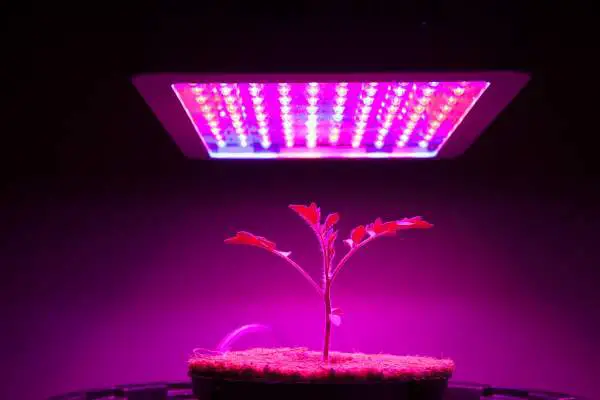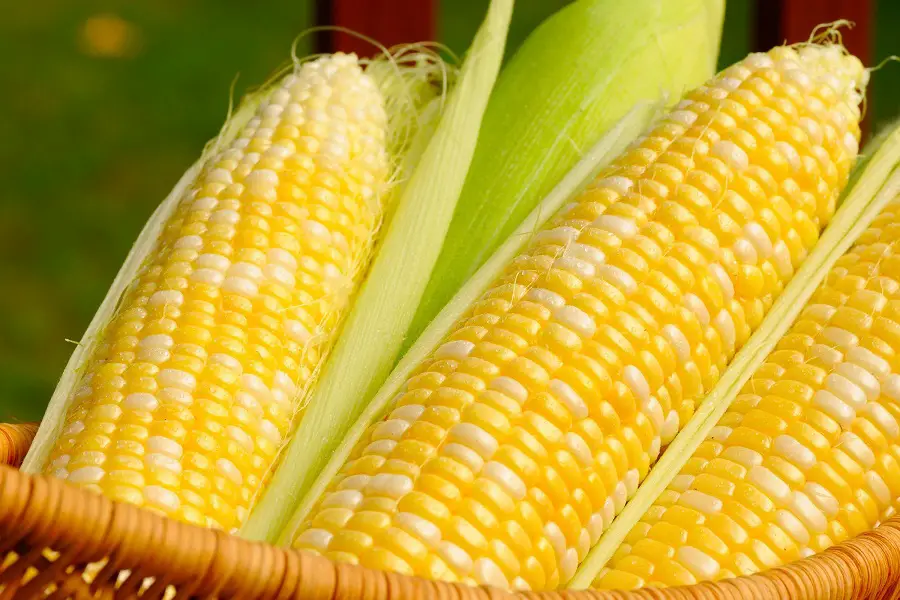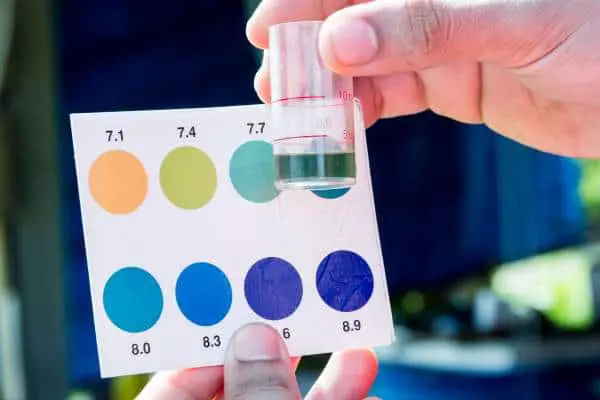When building an indoor hydroponic system, there are many different choices to make. One of the most important choices is the type of lighting you will use. After all, growing plants indoors means you need to imitate the natural sunlight that an outdoor garden is bathed in.
There are many types of grow lights on the market, each with advantages and disadvantages. To help you pick the most suitable grow light for your indoor gardening system, we’ve collected and reviewed some of the most recommended hydroponic lights on the market.
We will also tell you a little bit about how to measure light, so you know which type of bulb you need to look for.
How Lighting is Measured
Before going through the various types of artificial light, it is good to see how light is measured, and what each bulb has to offer.
There are a few ways that light is measured, but some are almost obsolete, but still used in some things. Foot-candles or candle power is one such term, and this often relates to flashlights or spotlights that shine in millions or thousands of candle power.
Temperature is one of the primary terms you will see when growing indoors and looking for the ideal light. This temperature has nothing to do with heat output, but it is a reference to the natural color of the light produced.
When we see cool lights, these deliver light at the blue end of the spectrum (also called blue light) while when we look at lights that are warmly looking, these are providing light at the orange/ red end of the spectrum.
Lights can be measured by watt power, nanometers (nm), or Lumens most often. The watt power (or wattage) is the unit of energy required to run the lighting, and it is the term most people are familiar with. When it comes to growing lights, these are often rated to the number of watts needed for each centimeter squared of the surface to be illuminated.
Lumens is a reflection of how bright an LED grow light is, and although used, these lumens are not actually a rating that does anything for the plants. The light required by plants is beyond the physically visible spectrum.
When light is measured in nanometers, this is actually the light we can see. This visible light falls in the range of 400 to 700 nm. When you compare this to the color spectrum, the warm or red end will be reading 730 nm, and at the other end in the color part of the spectrum (violet), this will be reading 400 nm.
Almost all indoor grow lights fall in the range of 450 nm to 730 nm. These are the most crucial nm measures with one addition of 650 nm in the middle of the spectrum.
We all know that plants need to photosynthesize, and for plants to do this, there is the need for light at the 450 nm and 650 nm levels. With these, plants can create the food it requires from the light available along with water and carbon dioxide. It is the green pigment where chlorophyll is produced.
When plants use the 650 nm and 730 nm ranges, this allows them to control their flowering through another pigment which is called phytochrome.
This is why the full spectrum of light is required at varying stages of a plant’s growth, and this is why it is crucial to have the best grow lights that allow growers to replicate the light provided by the sun in an outdoor garden.
Here we will take a look at each lighting system, and see what they each offer for indoor plants.
Fluorescent Grow Lights
These lights have been around for years, and they are economical to run. They run cool and can be placed very close to the top of plants with no fear of burning. However, the light they give out isn’t strong enough to penetrate past the plant’s outer foliage or leaves.
One of the latest improvements is the introduction of the T5 bulb system. But there are a couple of things to know about this lighting type.
T5 Lighting Fixtures
You can find more than a dozen variations in size. Knowing the dimensions for the growing area of your garden can be crucial. So you will need to calculate growing space and then calculate your lighting needs.
There are usually two lengths that these bulbs can be found in – 2ft or 4ft. Along with this, some fixtures sizes can hold either 1, 2, 4, 6, 8, or 12 lighting tubes. This delivers lots of flexibility for any garden size. The rule of thumb is: A small space with a few plants can use a 2 or a 4ft light fixture that has 1 or two bulbs. For larger areas with more plants, you will need a 4ft fixture.
T5 Fluorescent Bulbs
One of the largest draws toward T5 tubes is that they cover different color temperatures. It is hard to give an exact figure which meets different growers’ requirements. Choosing a bulb that delivers 6,500 Kelvin is a good starting point for plants in the growth phases. For flowering, bulbs that offer 3,000 Kelvin are more suitable.
There is also 3 outputs for T5 tubes, these are NO (Normal Output), HO (High Output), and VHO (Very High Output). To get the best of both, the HO (High Output) is a good recommendation. These are energy efficient while delivering plenty of good light, and are long-lasting.
T5 grow lights can be placed 6 – 8 inches above your plants. If you have seedlings or plants are showing signs of distress, raise this to 12 inches.
Pros
- Cheaper than most other lights
- The emitted light can cover larger areas than other LED grow lights
- Versatile and long-lasting
Cons
- Not the best choice during vegetative growth stages
- Not the most suitable for flowering stages
HID Lights for Hydroponic Systems
HID’s (High-Intensity Discharge Lights) are systems that come with much larger bulbs than other systems. These work by a gas being ignited inside the bulb. This is done by electrodes that sit close together, and when a current is passed through these, the gas becomes ignited.
The 2 types of HID lights are discussed below.
MH (Metal Halide)
These burn gas that produces lighting toward the bluer end of the lighting spectrum. This is beneficial for the vegetative stage of a plant’s growth cycle.
HPS (High Pressure Sodium)
This bulb type produces light that sits toward the red/ orange end of the spectrum and is much better for plants that have reached their flowering stage.
All HID lights need other components to run and be effective. These are as follows:
- Ballast – this is what helps the bulb start when it is turned on, and it also helps to maintain the flow of electricity. These come in two forms. The first is a magnetic ballast that uses coils and a condenser to regulate power. The second is the newer digital ballast option. These are more effective and cost-efficient when running.
- Reflectors – these are, in the purest form a light steel hood that sits above the bulb to force light down to the plants.
HID’s lose their (Lumen) effectiveness by almost 70% once they have been used for a total of 10,000 hours or more. To put this in perspective, if you run the lights for 14 hours per day, this is around 2-years. However, there are a lot of hydroponic gardeners who monitor their lights closely and change them well before this period is up.
Overall, these are very effective lights. They deliver very active UV rays through the light that is given to plants, and with this comes some very productive photosynthesis.
Pros
- Can be dimmed, so customizable light can be delivered
- Digital ballast allows for all HID bulbs to be used
- Deliver better usable light than T5’s
Cons
- Can burn plants if placed too close
- Require additional components to operate – ballast, reflectors
- Bulbs lose effectiveness over time – require frequent changing
Led Grow Lights For Your Indoor Hydroponic Garden
These lights have been around for a little while, but they are still new in hydroponics for a good number of growers. Although they are still relatively expensive, they do come with numerous benefits over other lighting systems.
Luckily, as they gain more popularity, their prices will continue to fall. However, some manufacturers produce lights that deliver lower amounts of light. When looking to purchase, be sure the lights you look for are 2.0 micromoles per watt of energy as a minimum.
These cheaper LED lights aren’t enough to support flowering plants, so it is essential to do some homework beforehand. This can change depending on the type of plants being grown, but hopefully, these subpar grow lamps will vanish when costs fall.
One final thing to note when looking at buying LED lighting systems is that many are sold as being an all-in-one unit. In some cases, this isn’t the case, and there is a need for reflectors to be used with LED grow lights.
Pros
- Very energy efficient, and are among the cheapest type of light sources to run.
- LEDs produce more light per watt of energy than both HID’s and fluorescents. But with some exceptions
- The LEDs run much cooler, so there are considerably fewer chances plants will be burned
- LEDs are very long-lasting, and in many cases, it is the control unit that fails before the bulbs themselves
- LEDs don’t need any ballast to operate and can be plugged directly into the mains socket
- LEDs cover a wide range of the color spectrum and are adjustable so they can be tailored to your plant’s needs and stages of growth
- LED’s are now known to be the easiest to use
Cons
- At present, these lighting fixtures are more expensive than the alternatives
- Some of the lighting systems throw out less light than other varieties of LED grow lights.
- Some manufacturers produce lights that don’t have the power to support plants when they are in their flowering stages.
Alternative Grow Lights
Although these are the primary three lighting systems, and with good reason. They all have their benefits, but this still isn’t good enough for manufacturers. They keep on striving away to produce more efficient and cost-effective solutions.
Here are some of the alternative lighting systems you might be hearing of and seeing more of in the near future.
Induction Lighting
These are basically new versions of CFL bulbs (compact fluorescents). The way they operate though is pretty technical. What they do is ignite a gas compound that is generated by means of magnets. For this, there is no igniter, and everything happens inside a sealed tube.
Their light creation process produces less heat than it does light. This gives them a theoretical range of 100,000 hours which is way above any other system.
One problem they do have is, they can interfere with cell phones and Wi-Fi signals
Pros
- Almost double the efficiency of other fluorescent lights
- The theoretical lifespan of the usefulness of over 15 years
- Cool running so they can be placed closer to the tops of crops
- Instant-on compared to lights that require a warm-up period
Cons
- Noisy in operation
- Too new, so still very expensive
- Still not as efficient as HPS or LED’s
Double Ended Lighting
DE (Double-ended lighting) is relatively new and is a form of HPS lighting system. It is similar to HPS lights. But rather than being a single ballast socket, it is a double-ended tube that connects to the ballast at both ends. The key benefits and downsides are:
Pros
- DE lighting has a longer lifespan than its single-socket counterparts.
- More efficient – these lights can retain as much as 90% of their efficiency compared to previous lights over the same amount of hours usage.
- Thin tubes allow for closer plant placement compared to single-ended bulbs
Cons
- Although they can be placed closer to plants, they do run hotter and can cause leaves to burn
- Direct airflow reduces the efficiency of the lamp while in operation
Sulphur Plasma
These bulbs burn gas at very high temperatures, and in effect, they are replicating the sun. At present, all the information is still in developers’ hands because these bulbs are still new and in testing.
At present, there are only pros and cons to be shared, but no doubt, if these are found to be beneficial, then every grower will quickly hear about them.
Pros
- The bulb has the potential to create almost natural light because the spectrum of the generated light is close to that of the sun.
- If successful, these can be the best option for larger grow rooms, or where bulbs can’t be placed close to crops.
- The lifespan is expected to be 3X or 4X the length of other forms of traditional hydroponic lighting systems.
Cons
- Not suitable for smaller grow rooms because they burn so hot
- Fixtures are large and bulky
- Very expensive
Conclusion
As you can see, not all LED grow lights are created the same. Each comes with its own benefits, and also its own unique downsides.
On top of this, is the fact that all grow rooms are very different, so there are countless other variables growers need to consider. Lighting is only one part of this puzzle, but it is evident, no one lighting system is perfect.
Growers need to understand all of their plant’s requirements, and also what they want from their plants. When they know this, they can put things in place, and choose the best lighting system that their budget allows. Even then the choice may not be so simple, but at least growers will know the options they have, and which lighting systems are most suitable for them.





